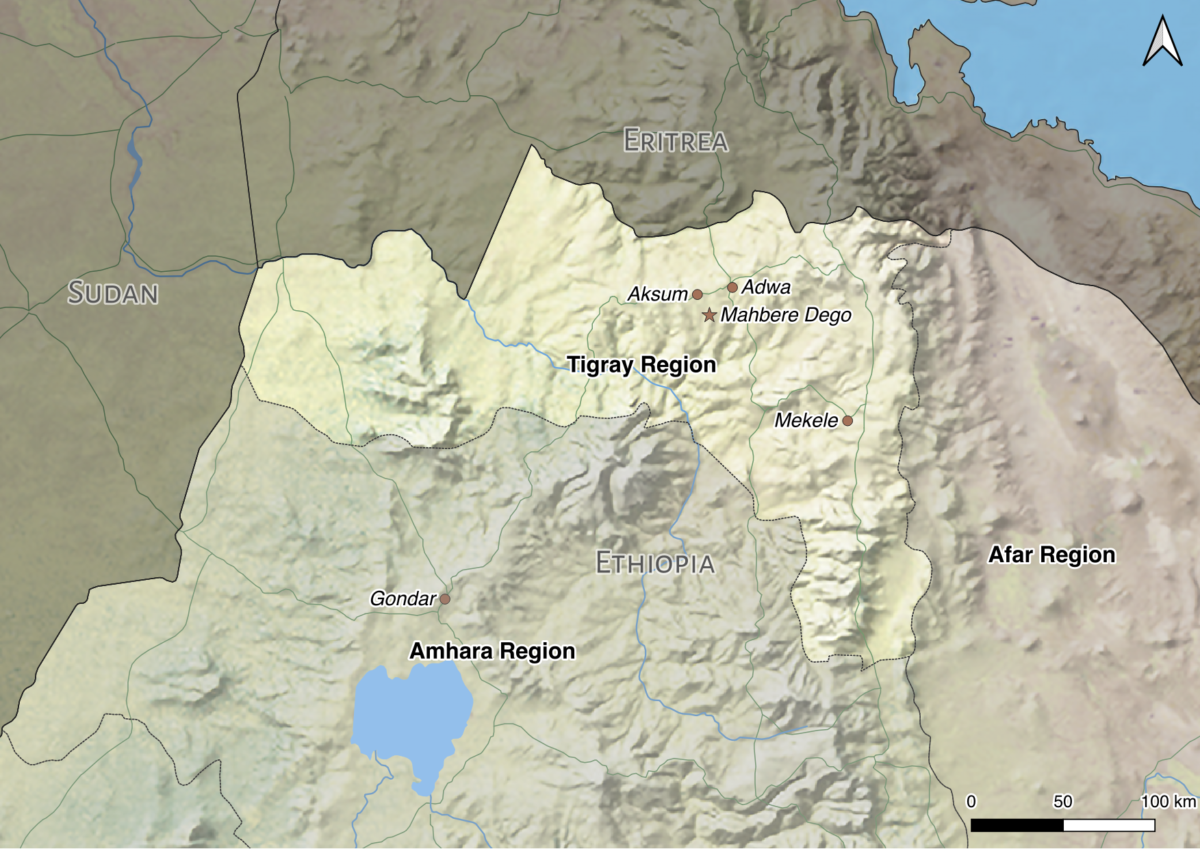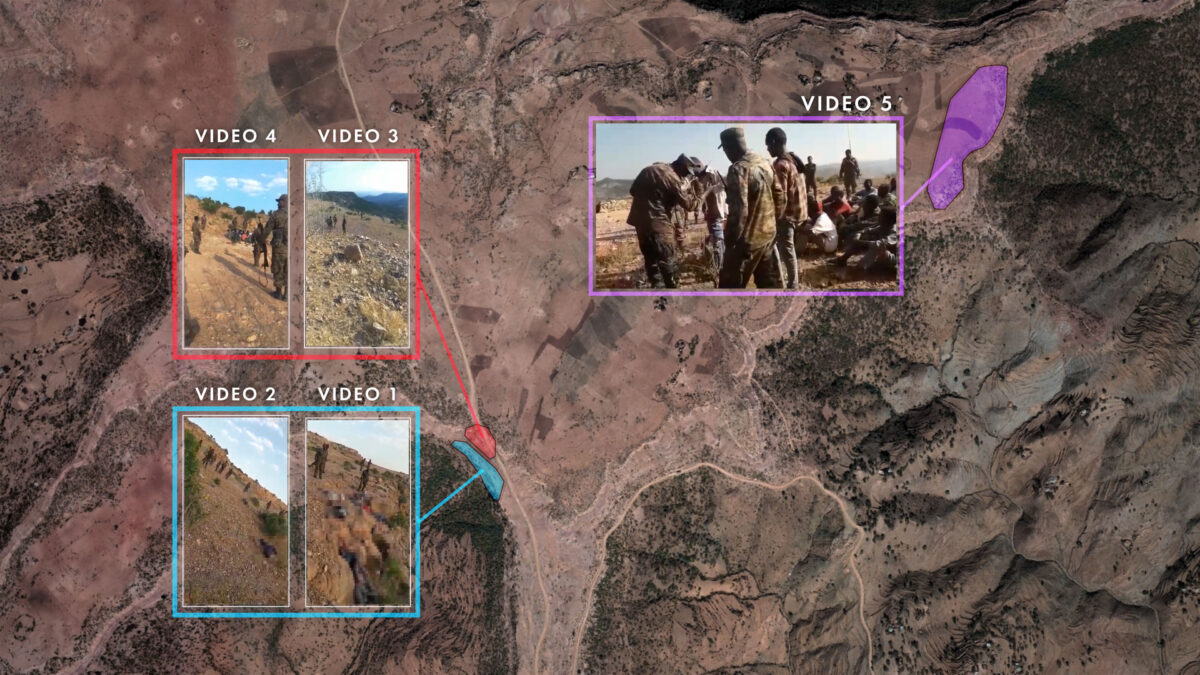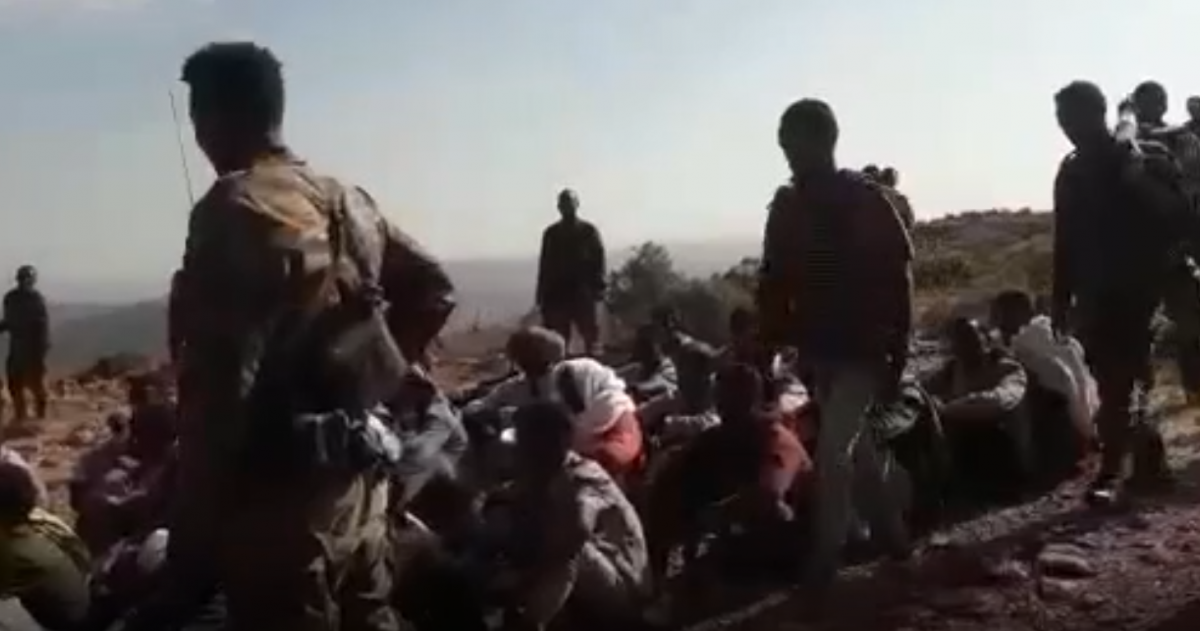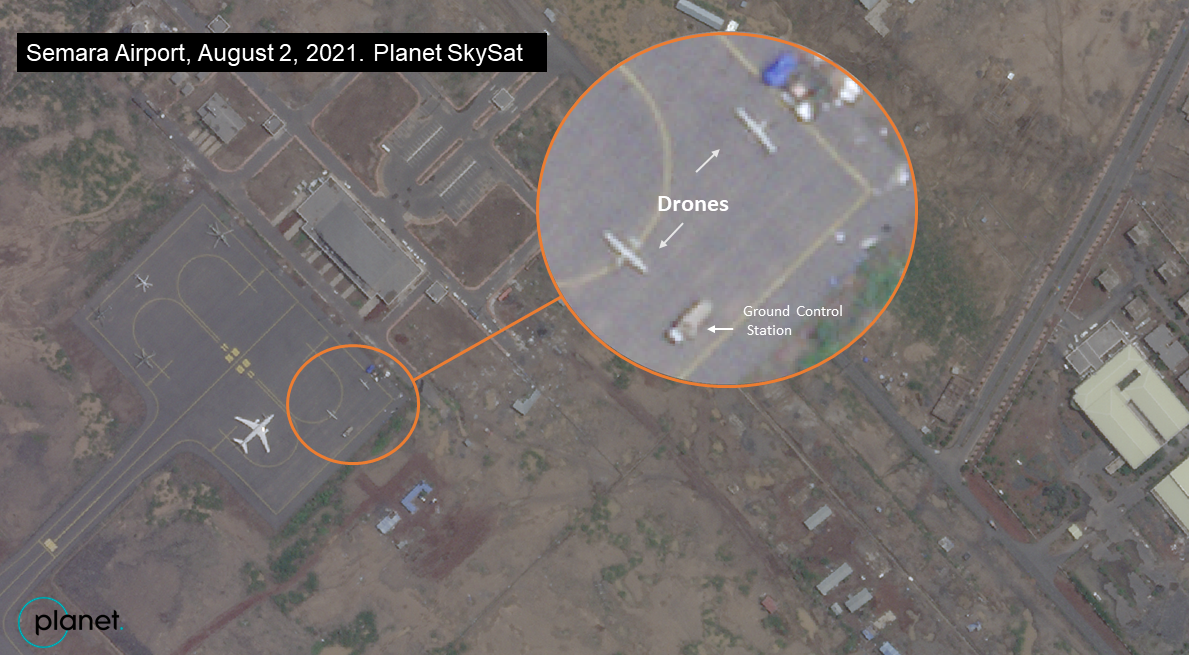Tigray Conflict: Videos Provide New Details of Mahbere Dego Massacre
Earlier this year, Bellingcat worked with Newsy and BBC Africa Eye to geolocate five videos showing the execution of civilians by people in military uniform near Mahbere Dego, a town in Ethiopia’s Tigray region.
That joint investigation concluded that the massacre likely took place some time in January 2021. The soldiers in the video were speaking Amharic, Ethiopia’s administrative language and the native tongue of the Amhara people. At least one military uniform seen in the videos also displayed the markings of the Ethiopian flag.
On 16 June 2021, new footage surfaced on social media showing soldiers executing civilians at a cliff edge. Analysis of this new footage shows that it is part of the same massacre on which we reported previously.
Further details can also be gleaned from the new footage. A patch on the arm of a soldier seen carrying out executions in the footage bears the same colours and markings of the Ethiopian flag as seen in the initial videos. The person who appears to be recording the video also states the name of the military unit to which he claims to belong.
The conflict in Tigray has raged since November last year and pitted the country’s federal forces against the Tigray People’s Liberation Front (TPLF). It has since drawn in the army of neighbouring Eritrea as well as pro-government militias from Ethiopia’s Amhara Region to the South.
Millions have been displaced and there have been widespread reports of severe rights abuses, including executions, sexual violence and forced displacements.
As Ethiopia comes out of a heated election period, further escalations have been reported in the region — this week, the Ethiopian air force bombed a marketplace in Tigray.
Mahbere Dego Massacre
Our earlier investigation into the Mahbere Dego massacre concluded that the five videos were recorded at two different sites just south of the town of Mahbere Dego (ማሕበረ ደጎ) in the Tigray region. We labeled these Video One through Video Five. While Videos One to Four were filmed at the cliff edge where the executions took place, Video Five was filmed in a field approximately one kilometre to the northeast of the site of the executions.
New Footage
The new footage from near Mahbere Dego was first shared online by the US-based, pro-Tigrayan news channel Tigray Media House (TMH) on 16 June, 2021. In total, there is approximately one minute and thirty eight seconds of additional footage showing the executions at the cliff edge. Tigray Media House claimed that the footage was related to the Mahbere Dego massacre, on which we reported previously. Our analysis confirms this claim.
Based on the number of dead bodies present in the new footage, it is likely to have been recorded early during the same executions. The new footage contains clues that not only link it to the original five Mahbere Dego massacre videos, but also that potentially provide more evidence about who perpetrated the killings.
The geographic features visible in the new footage match those highlighted in our previous investigation. These include not only the cliff, but also a rock formation on the left of the videos.
There is a noticeable difference in quality between the original videos and the new footage. This is due to the formatting difference between the original videos, which we found high resolution copies of, and the new footage, which we took from a YouTube broadcast. This difference in quality is immaterial to the geolocation of the new footage.
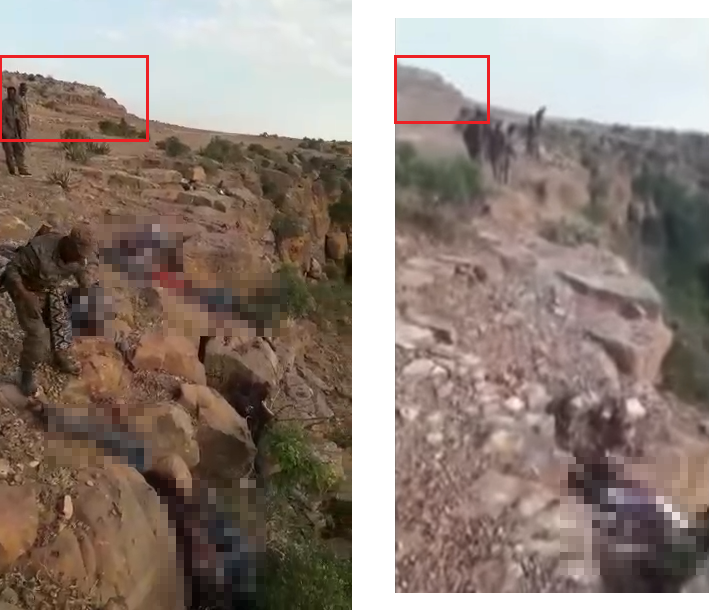
Note the rock feature (red box) that appears in both the original videos (left) as well as in the new footage (right). We have blurred the bodies of the victims.
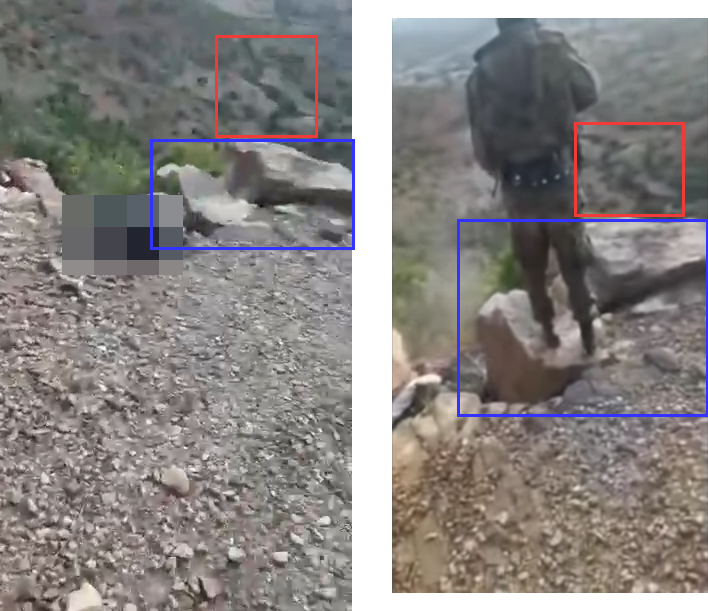
A distinctive black line, likely a dry creek bed in the valley below (red box) and two rocks (blue box) are visible both in the original videos (left) and the new footage (right).
The new footage also shows at least one captive who was visible in one of the original videos.
Video Five from our previous investigation showed a group of people in civilian clothing sitting on the ground surrounded by soldiers. In that video, one of those under detention of the soldiers can be seen wearing a dark coloured undershirt with white horizontal stripes and a reddish-brown chequered shirt.
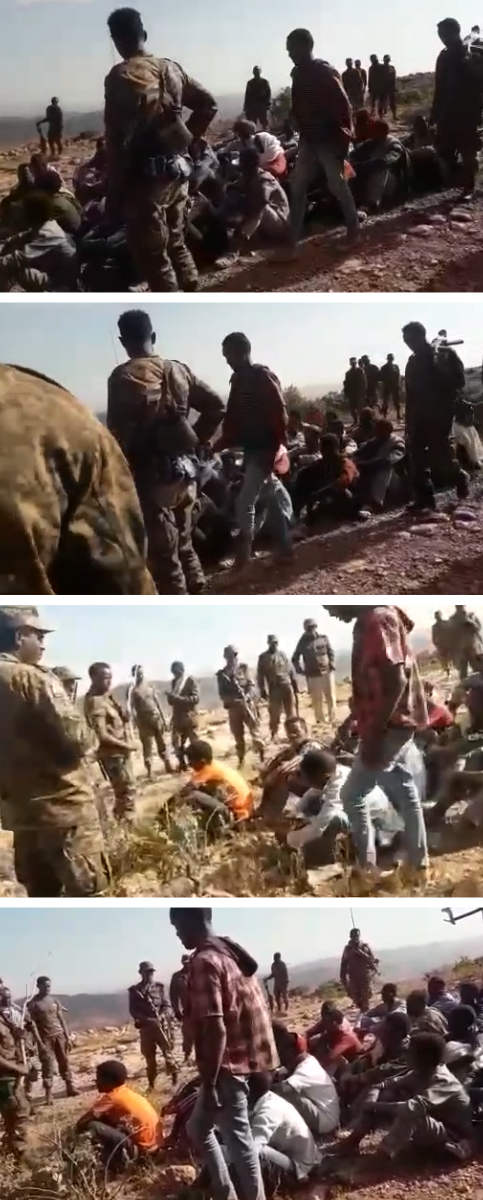
The four screenshots above show a sequence from Video Five. Note that the man walking in front of the camera is wearing a shirt with white horizontal stripes and a reddish-brown chequered shirt.
The same man from Video Five above appears in the new footage after he has been executed and thrown off the cliff by the soldiers.
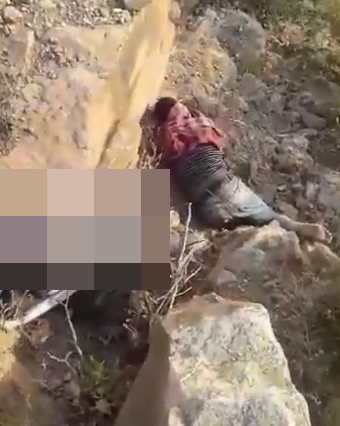
Note that the man’s undershirt and shirt are the same as the ones seen in the sequence from Video Five.
This is the second person from Video Five that we have identified as having been executed at the cliff edge. In our previous investigation, we determined that a man in a red long-sleeved shirt and white shawl visible in Video Five appeared in one of the cliff edge videos just as he was about to be executed.
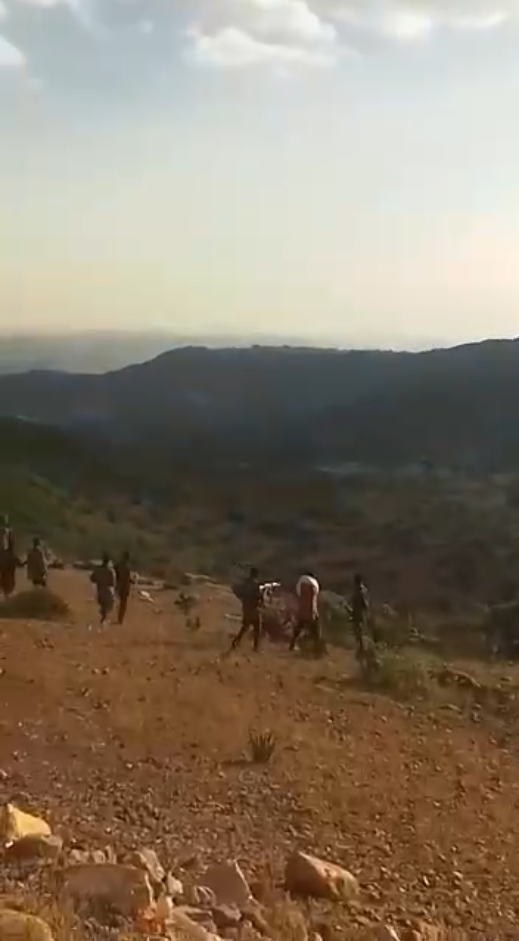
In our previous investigation, we noticed that an individual wearing a red shirt and a white shawl was visible in both Video 5 (top) and in one of the videos showing the executions at the cliffside (bottom).
The new footage also contains more glimpses of what appear to be the colours of the Ethiopian national flag on the shoulder patches of at least one of the soldiers conducting the executions.
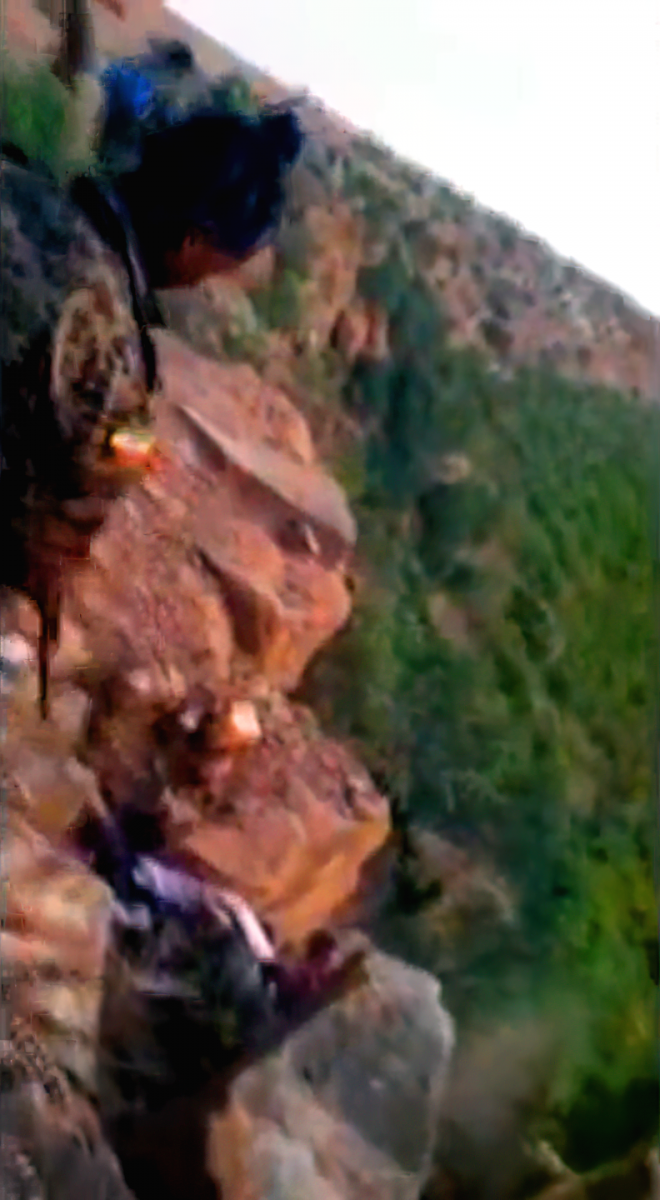
Note the colours on the patch of the soldier in this screenshot from the new footage, which match those of the Ethiopian national flag. The screenshot’s contrast and brightness have been enhanced to better show the colours.
We highlighted a similar flag patch on another soldier in our previous investigation. One of the soldiers in Video Five had what appeared to be the same flag patch on his shoulder, which bore the colours of the Ethiopian national flag.
Through a process that involves splitting and adjusting the colour channels and increasing the contrast of the frames in the video, we were able to enhance the colours in the image showing the flag patch.
As we noted in our previous investigation, recent open source images show that such sleeve badges showing the national flag are currently worn by active service members of the Ethiopian Armed Forces.
New Audio Clues and New Investigative Threads
According to Gubae Gundarte Beyene, an Ethiopian translator and communications scholar at the University of Oregon whom Bellingcat consulted about the conversations that can be heard taking place in the videos, the soldier recording the videos refers to himself as Fafi (ፋፊ).
In the videos, Fafi refers to the victims as “Woyane” (Amharic: ወያኔ, Tigrinya: ወያነ), which as we explained in our previous publication is an epithet that translates roughly as “insurgent”, and is now used as a derogatory term for people believed to be associated with the Tigray People’s Liberation Front (TPLF).
Fafi also states that he belongs to the “25th Division, 1st Brigade.” (25ኛ ክፍለጦር፣ 1ኛ ብርጌድ)
It has not been possible to corroborate this particular piece of information.
However, a spokesperson for the Tigray Regional Forces reportedly stated in February that they had ambushed and fought the second and third brigades of the 25th Division of the Ethiopian National Defence Forces.
Bellingcat reached out to the office of the Ethiopian President as well as the Ethiopian Embassies in Washington DC and London to request comment on the details in this story and to ask whether the 25th Division, 1st Brigade or any other division of the Ethiopian military had been in or near Mahbere Dego at any time during the Tigray conflict.
The Ethiopian embassy in London told Bellingcat that it had forwarded Bellingcat’s request to “pertinent officials in Addis Ababa” but a response was not received before publication.
Bellingcat and Newsy continue to work on verifying videos alleged to be related to the Mahbere Dego massacre.
